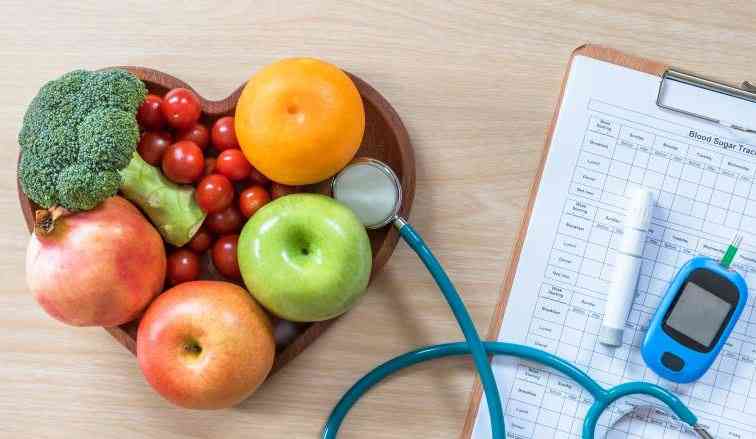
Recent research shows that Type 2 diabetes may not be as permanent as once believed.
Picture your body as a large sugar bowl. At birth, it’s empty. Over the years, sugar and refined carbs slowly fill it up. Eventually, the bowl overflows every time you eat, excess sugar spills over because here is no more room.
The same process happens in our bodies. When you eat sugar, your body releases in insulin, a hormone that helps move sugar into your cells to be used for energy. But if you don’t burn off that sugar over time your cells become full and cannot take it anymore.
So, next time you eat, insulin cannot push more sugar into the overloaded cells. Instead, the excess sugar stays in your blood stream. This sugar known as glucose, builds up, leading to high blood glucose levels, a key sign of Type 2 diabetes.
When there’s too much glucose in the blood, it seems like insulin isn’t doing its job of moving sugar into the cells. This is called insulin resistance. But insulin isn’t the real problem—the cells are already full of glucose and can’t absorb any more.
The issue isn’t just high blood sugar. There’s too much glucose in the blood and in the cells. Type 2 diabetes is, at its core, an overflow condition—caused by excess glucose throughout the entire body.
In response to high blood sugar, the body produces even more insulin to try and push the excess glucose into already full cells. This temporarily lowers blood sugar, but it doesn’t solve the root problem, too much sugar overall. It simply shifts the excess from the blood into the cells, making the situation worse.
- Poisons Board warns against misuse of Ozempic for weight loss
- When every prick means survival for teens
- Understanding possibility of remission in diabetes
- Beyond the smile: Lucy Kahoro's 15-year journey with Type 2 diabetes
Keep Reading
Over time, even high levels of insulin can’t force more glucose into the overloaded cells. The more sugar your body tries to absorb, the more insulin it needs. But this only increases insulin resistance, as the cells grow even more swollen with glucose.
When your body can no longer produce enough insulin to keep up, medications step in. At first, one drug may be enough—but over time, more are needed, and doses increase.
But once we recognize that Type 2 diabetes is simply a result of too much sugar in the body, the solution becomes clear: don’t just hide the sugar—get rid of it. There are only two effective ways to do this: reduce how much sugar you take in and burn off the excess.
The first step is to cut out all added sugars and refined carbohydrates from your diet. These offer no nutritional benefit and only fuel the problem.
Even complex carbohydrates and refined foods like white flour break down quickly into glucose, spiking blood sugar levels.
The best approach is to reduce or eliminate foods like white bread, pasta made from white flour, white rice, and potatoes—these quickly convert to sugar in the body.
Keep protein intake moderate. While protein is essential for health, excess amounts can be converted into glucose by the liver. This means too much protein can actually add sugar to the body. Avoid heavily processed protein sources such as shakes, bars, and powders.
To cut down sugar intake, focus on whole, natural, unprocessed foods. Aim for a diet low in refined carbohydrates, moderate in protein, and rich in healthy, natural fats.
The second step is to burn off the excess sugar already stored in your body.
Exercise—both resistance and aerobic—can help manage Type 2 diabetes, but it’s not as effective in reversing the condition as dietary changes. The most powerful and straightforward method to burn off excess sugar is fasting.
Fasting is simply the opposite of eating. When you eat, your body stores energy; when you fast, your body burns it—starting with glucose, the easiest fuel to access. By extending your fasting periods, you give your body time to burn through stored sugar.
Though it may seem extreme, fasting is one of the oldest dietary practices in human history. It has been safely used for centuries. However, if you’re on prescription medication, consult a doctor before starting any fasting regimen.
The logic is simple: If you stop eating, your blood glucose will drop. If you stop eating, you’ll lose weight. So what’s the downside? There may not be one—if done wisely.
Two popular fasting methods are: Fasting for 24 hours, two to three times a week. Fasting for 16 hours, five to six times a week. The key to reversing Type 2 diabetes may be as close as your next meal—or rather, your decision to skip it.
 The Standard Group Plc is a multi-media organization with investments in media
platforms spanning newspaper print
operations, television, radio broadcasting, digital and online services. The
Standard Group is recognized as a
leading multi-media house in Kenya with a key influence in matters of national
and international interest.
The Standard Group Plc is a multi-media organization with investments in media
platforms spanning newspaper print
operations, television, radio broadcasting, digital and online services. The
Standard Group is recognized as a
leading multi-media house in Kenya with a key influence in matters of national
and international interest.











